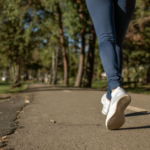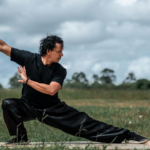In the pursuit of a healthier lifestyle, timing often plays a crucial role. From meal timings to sleep schedules, many aspects of our daily routines are carefully calibrated for optimal health. But what about the timing of our physical activity? Does it matter whether we hit the gym at dawn or go for a run at dusk? In this article, we delve into the science behind the timing of physical activity and its impact on our health.
Understanding Circadian Rhythms
Our bodies operate on a 24-hour internal clock known as the circadian rhythm. This rhythm regulates various physiological processes, including sleep-wake cycles, hormone secretion, body temperature, and metabolism. It is influenced by external cues such as light and darkness, helping us adapt to the natural day-night cycle.
Morning Exercise: Jumpstarting Your Day
Many fitness enthusiasts swear by early morning workouts, and for good reason. Exercising in the morning can jumpstart your metabolism, increase alertness, and set a positive tone for the rest of the day. Moreover, morning exercise has been shown to enhance mental acuity and improve mood, thanks to the release of endorphins, our body’s natural feel-good chemicals.
Research indicates that morning exercisers are more consistent with their workout routines compared to those who exercise later in the day. This consistency can lead to better long-term adherence to fitness goals and overall health improvement.
Afternoon and Evening Workouts: Maximizing Performance
While morning workouts have their perks, some individuals find that their performance peaks later in the day. Research suggests that our muscle strength, flexibility, and coordination tend to reach optimal levels in the late afternoon or early evening. This can translate to better workout performance and reduced risk of injury during activities that require physical exertion.
Additionally, evening workouts can serve as an effective stress reliever, helping individuals unwind after a long day and promoting restful sleep. However, exercising too close to bedtime may disrupt sleep patterns in some individuals, so it’s essential to find the right balance.
Tailoring Timing to Personal Preferences
Ultimately, the best time to exercise is the time that fits seamlessly into your lifestyle and preferences. Whether you’re a morning lark or a night owl, consistency and adherence to your workout routine are key factors in achieving your fitness goals. Listen to your body’s cues and choose a time that allows you to perform at your best while enjoying the process.
Factors to Consider
When determining the optimal time for your workouts, consider the following factors:
- Personal Circadian Rhythm: Pay attention to your natural energy levels and when you feel most alert and energized.
- Schedule Constraints: Choose a time that aligns with your daily schedule and commitments to ensure consistency.
- Workout Type: Some forms of exercise may be better suited to specific times of the day. For example, high-intensity workouts may be more challenging in the morning for some individuals, while others may thrive on the adrenaline boost.
- Environmental Factors: Consider external factors such as weather conditions and gym/busy hours that may impact your workout experience.
Conclusion
In the debate over the optimal time to exercise, there is no one-size-fits-all answer. The key lies in finding a routine that works for you, whether it’s an invigorating morning jog or a sunset yoga session. By understanding your body’s natural rhythms and listening to its cues, you can maximize the benefits of physical activity and embark on a journey to better health, one workout at a time. Remember, the most important thing is to keep moving, regardless of the time of day.



